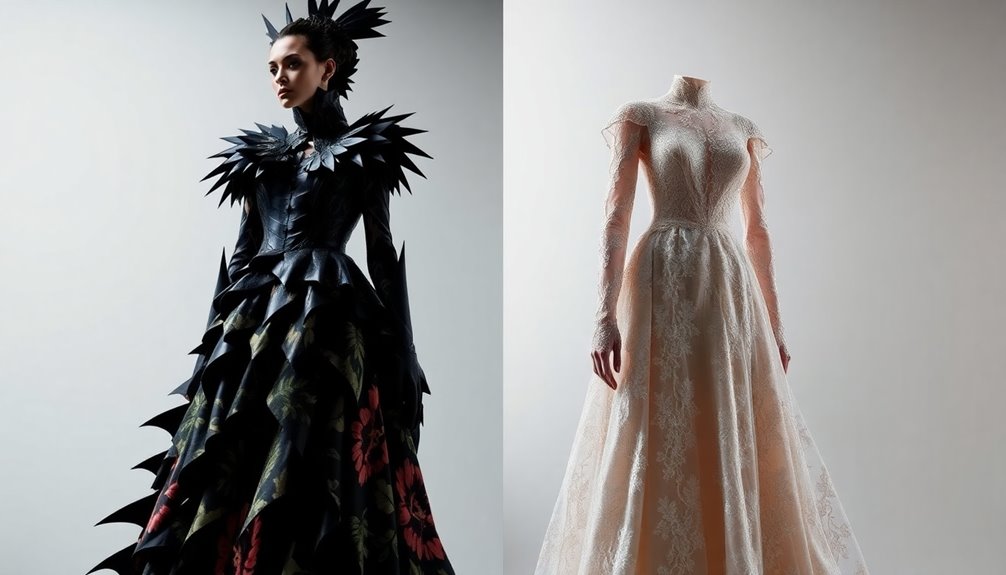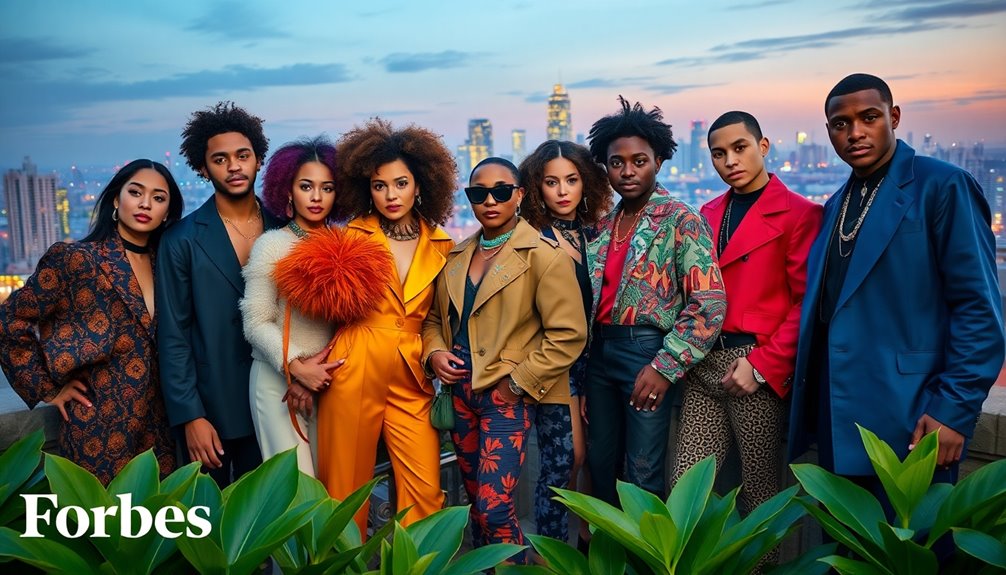Alexander McQueen's journey from fierce and provocative to refined and elegant showcases his remarkable evolution in fashion. Born in East London, he absorbed his working-class roots and seamstress skills, igniting a unique vision. You'll find his early collections, like "Highland Rape," marked by dark themes and societal critiques. As his career progressed, he introduced iconic designs like the "Armadillo" boots and collaborated with artists such as Damien Hirst. Under Sarah Burton's leadership following his passing, McQueen maintained its innovative spirit while embracing sophistication. Intrigued by this fascinating transformation? There's much more to uncover about his lasting impact on fashion.
Key Takeaways
- Alexander McQueen's early life and working-class roots heavily influenced his exploration of identity and societal norms in his designs.
- The launch of his eponymous brand in 1992 showcased iconic collections that blended savage beauty with commentary on femininity and societal issues.
- McQueen's innovative runway shows transformed traditional fashion presentations into immersive experiences, integrating technology and challenging perceptions of reality.
- Collaborations with artists and musicians, such as Damien Hirst and Lady Gaga, expanded his influence and accessibility in the fashion world.
- After McQueen's passing, Sarah Burton and Seán McGirr evolved the brand, maintaining its core tenets while introducing a sophisticated, modern perspective.
Early Life and Inspirations
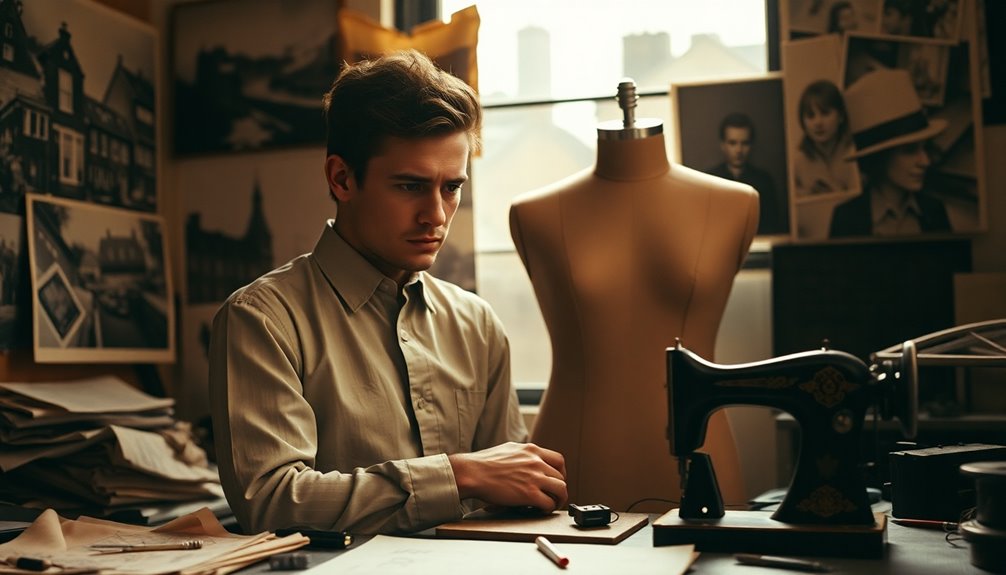
From an early age, Alexander McQueen often found inspiration in his surroundings, particularly from his working-class roots in East London. Born Lee Alexander McQueen on March 17, 1969, he grew up in a family where craftsmanship was valued, thanks to his mother's work as a seamstress. This early exposure to tailoring ignited his passion for design, prompting him to leave school at 16 to pursue an apprenticeship.
You'd find him honing his skills at Savile Row, where he mastered traditional menswear techniques at renowned establishments like Anderson & Sheppard and Gieves & Hawkes. His experiences as a pattern cutter, first with Koji Tatsuno and later at Givenchy, deepened his understanding of precision and the lightness of fabric.
McQueen didn't just stop there; he drew inspiration from art, history, and nature, often visiting the Victoria and Albert Museum for ideas. His fascination with global cultures, particularly from Africa, China, and Japan, influenced his thematic explorations of identity, sexuality, and societal norms, laying the groundwork for his distinctive approach to fashion. This commitment to exploring diverse influences mirrors the importance of community engagement in fostering positive change.
Launching the Eponymous Brand
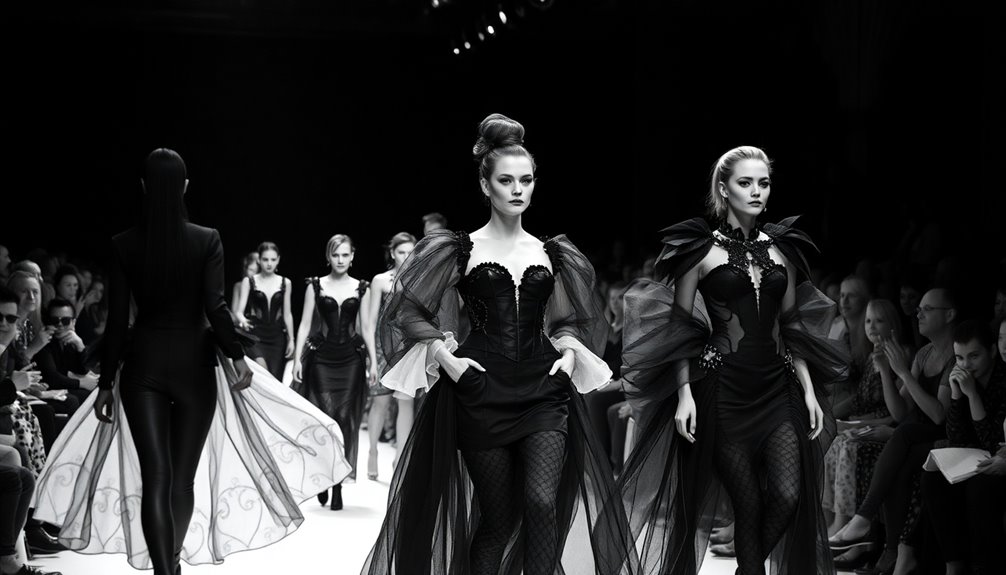
In 1992, Alexander McQueen launched his eponymous brand with a groundbreaking graduation collection titled "Jack the Ripper Stalks His Victims" at Central Saint Martins College of Art and Design. This provocative collection shocked and enthralled audiences, setting the tone for what was to come. Upon seeing the collection, Isabella Blow acquired it for £5,000, becoming a crucial supporter and advocate for McQueen's vision. Dropping his first name "Lee," he embraced the Alexander McQueen brand, which would soon become synonymous with innovation and controversy. In 1993, his first collection, "Taxi Driver," introduced the now-iconic "bumster" look, showcasing his flair for unique silhouettes. By 1994, he unveiled a distinctive logo featuring a "c" inside the "Q," adding to his brand's identity. The 1995 "Highland Rape" collection further cemented his reputation as the "enfant terrible" of fashion, captivating and unsettling audiences alike. McQueen wasn't just a designer; he was a storyteller, using dramatic runway shows to convey his artistic narratives. Each collection pushed boundaries, redefining fashion and leaving an indelible mark on the industry, establishing McQueen as a provocateur of fashion.
The Savage Beauty of Designs
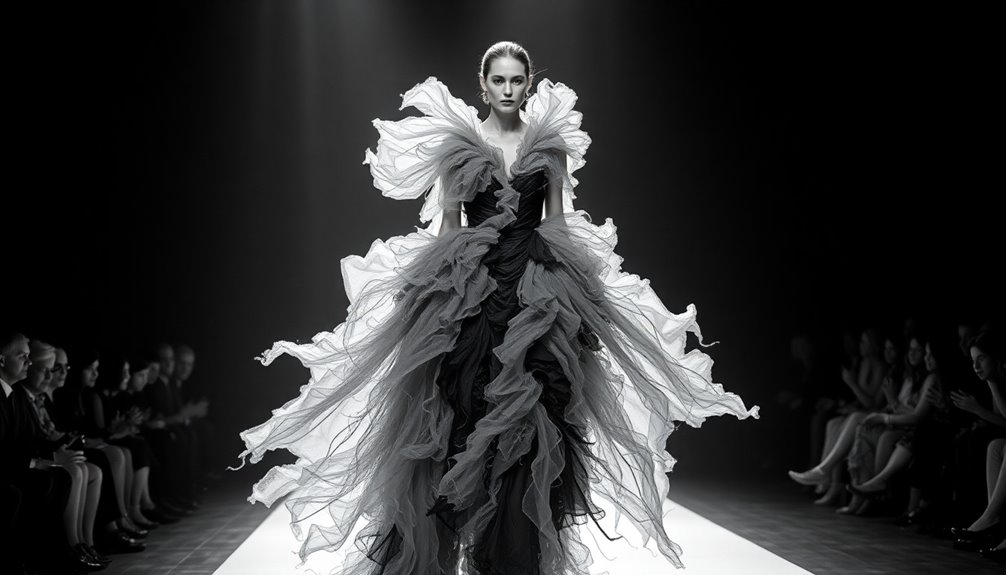
McQueen's designs epitomize savage beauty, merging dark themes with exquisite craftsmanship. Each collection invites you into a meticulously crafted world, arranged thematically around concepts like Romanticism, gothic elements, and nationalism.
As you explore, you'll notice each exhibition room evokes distinct emotions, carefully curated to resonate with the audience. His narrative structures draw inspiration from tragic literature and art, often reflecting the violent oppression found in Scottish history. This connection to the exhibition at The Metropolitan Museum of Art underscores the profound impact of his work on the fashion and art communities.
This theatricality transforms runway shows into immersive experiences that challenge your perception of reality. Collections like *Highland Rape* confront uncomfortable truths, urging you to question identity and societal norms.
Innovative materials play a crucial role in McQueen's aesthetic. You'll see everything from razor clam shells to digitally printed fabrics, showcasing a blend of haute couture techniques with cutting-edge technology.
His use of traditional materials like lace and silk balances the avant-garde with classic elegance. Ultimately, McQueen subverts traditional beauty standards, portraying women as powerful survivors.
His designs provoke thought on race, class, and environmental issues, making you reflect on the deeper societal critiques embedded in his work. In this way, savage beauty becomes a powerful commentary on the world we inhabit. For example, Azzedine Alaia’s famous leopard print dress challenges perceptions of luxury and animal rights, while his use of recycled materials in his collections brings attention to the environmental impact of fast fashion. This thought-provoking approach to design can be further understood by delving into the Azzedine Alaia biography, which reveals his lifelong dedication to pushing boundaries and sparking important conversations through fashion.
Influential Collaborations in Fashion
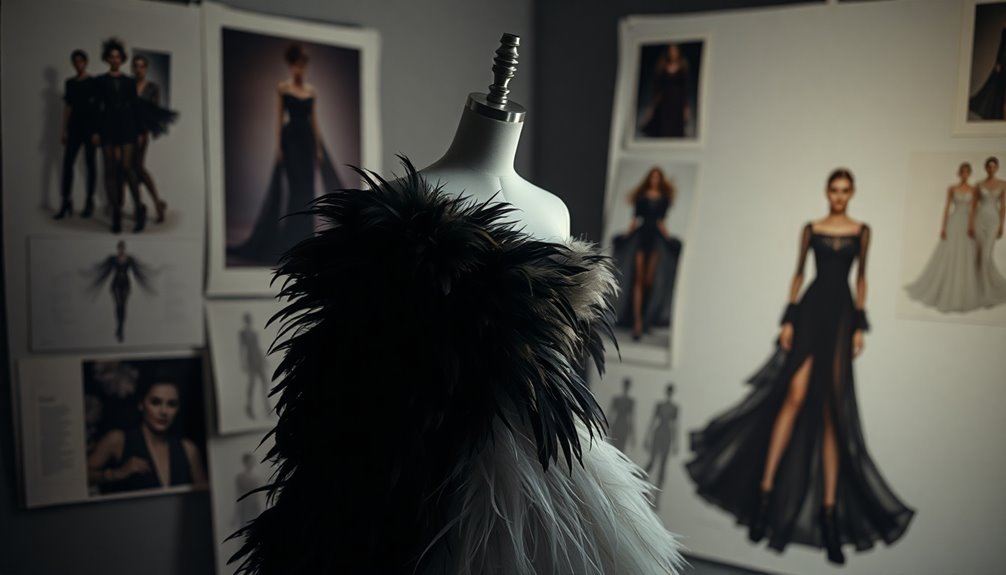
Collaborations in fashion have played a pivotal role in elevating Alexander McQueen's work, merging his visionary designs with the creative talents of other influential artists. One of the most notable partnerships was with Damien Hirst, resulting in 30 limited-edition scarves inspired by Hirst's 'Entomology' series, showcasing intricate kaleidoscopic patterns.
Additionally, David Sims brought a unique perspective with spooky menswear presentations that combined fashion and film, creating eerie visuals that captivated audiences. Limited Edition Collections often produced exclusive, limited-run items that created a sense of urgency and desirability among collectors.
McQueen also made strides in accessibility through collaborations with retail giants like Target, allowing a broader audience to experience luxury fashion. His partnership with Puma resulted in unique shoe lines, while the collaboration with Dolce & Gabbana on runway shows blended their distinct aesthetics.
In the realm of pop culture, working with Lady Gaga on the *Plato's Atlantis* collection brought McQueen's designs to a global audience, blurring the lines between fashion and music.
These collaborations emphasized the artistic expression behind McQueen's work, highlighting themes of evolution and the darker elements of nature, ultimately enriching the fashion landscape with innovation and creativity.
Iconic Pieces of McQueen
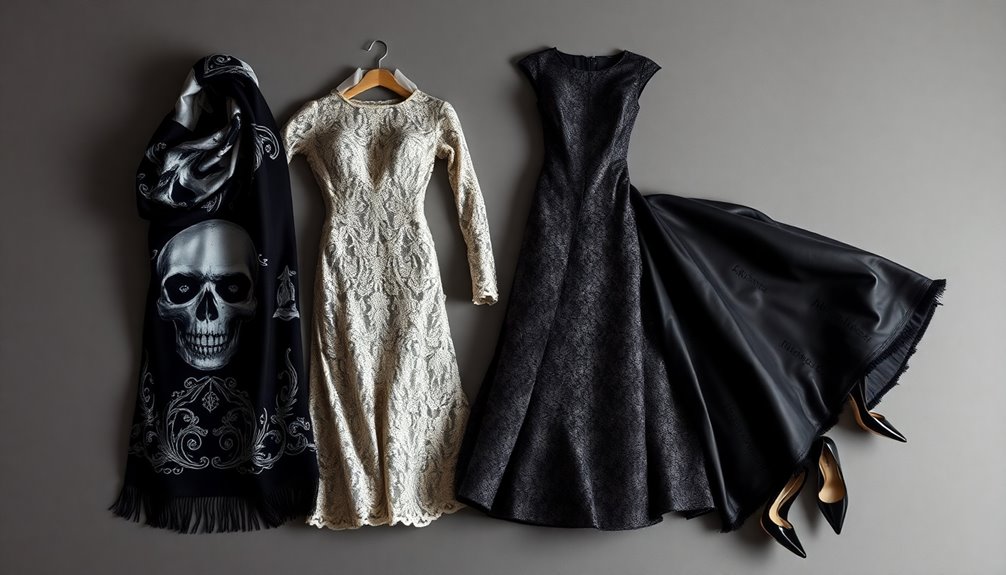
Alexander McQueen's iconic pieces have left an indelible mark on the fashion world, blending artistry with bold statements. One of his most celebrated collections, "Plato's Atlantis" (SS10), introduced the groundbreaking "Armadillo" boots, featuring a convex curved shape that challenged traditional footwear design.
The "Dante" show in 1996 unveiled the controversial "bumster" trousers, known for their ultra-low-rise fit, which ignited conversations about body image and fashion norms.
In the Autumn Winter 1998/1999 collection, a captivating cotton and tulle dress worn by Shalom Harlow showcased McQueen's ability to merge femininity with avant-garde aesthetics. The raven-like dress, adorned with black duck feathers, symbolized themes of death, while the digitally produced prints in "Plato's Atlantis" demonstrated his innovative use of technology. This collection also reflected McQueen's forward-thinking design philosophy through its Darwinian theories.
McQueen's work often drew on historical and cultural references, exemplified by the "Highland Rape" show, which, despite its controversy, highlighted themes of the Jacobite Rebellion.
Through these iconic pieces, McQueen not only pushed the boundaries of fashion but also invited you to engage with deeper societal themes, making a lasting impact on the landscape of contemporary fashion.
Recognition and Awards
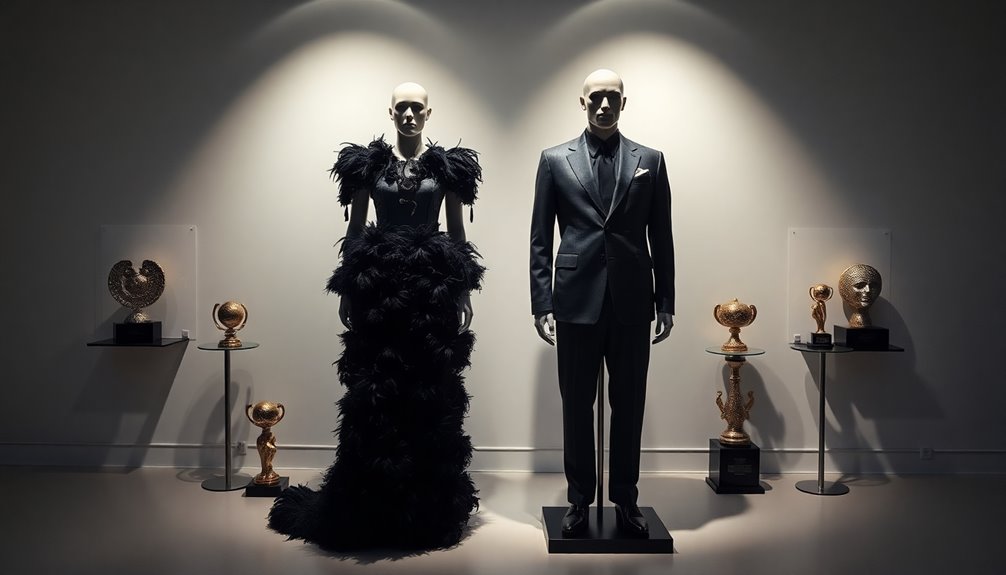
The impact of Alexander McQueen's work on the fashion industry is evident not just through his iconic pieces but also in the numerous accolades he received throughout his career.
He was a four-time British Designer of the Year, earning this prestigious title in 1996, 1997, 2001, and 2003. Alexander McQueen holds the record for the most Designer of the Year wins, demonstrating his unparalleled influence in the fashion world.
In 2003, he also received the International Designer of the Year award from the Council of Fashion Designers of America.
His recognition continued with the GQ Designer of the Year award in 2004.
The Legacy of Alexander McQueen
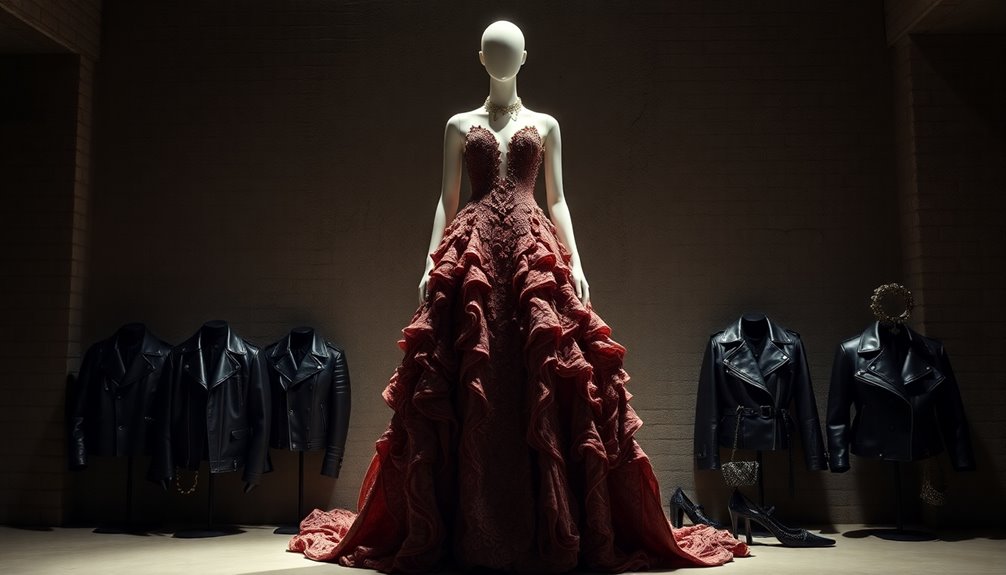
McQueen's legacy resonates through the fashion world, shaping how designers approach their craft and express their vision. He challenged and expanded fashion conventions, tackling themes like race, class, and sexuality, which inspired a generation of designers to embrace fearlessness in their work. By blending punk aesthetics with high fashion, he created a daring fusion that garnered international acclaim and influenced countless collections.
His runway shows transcended traditional presentations, incorporating performance art and experimental storytelling. These emotional experiences drew from Gothic horror, nature, and historical events, showcasing provocative themes that left a lasting impression. His groundbreaking approach to integrating technology into fashion helped redefine industry standards, encouraging other designers to explore innovative avenues.
McQueen also revolutionized the industry by integrating technology into fashion, implementing robotic choreography and live streaming to elevate the experience of fashion week.
Even after his passing, the Alexander McQueen brand thrives under Sarah Burton, maintaining the transformative vision he established. His designs remain timeless, embodying a respect for garment-making while challenging societal norms.
Ultimately, McQueen's enduring legacy is marked by innovation, daring creativity, and beauty, leaving an indelible mark on British fashion and inspiring future generations to push boundaries and redefine luxury.
Evolution Under New Leadership
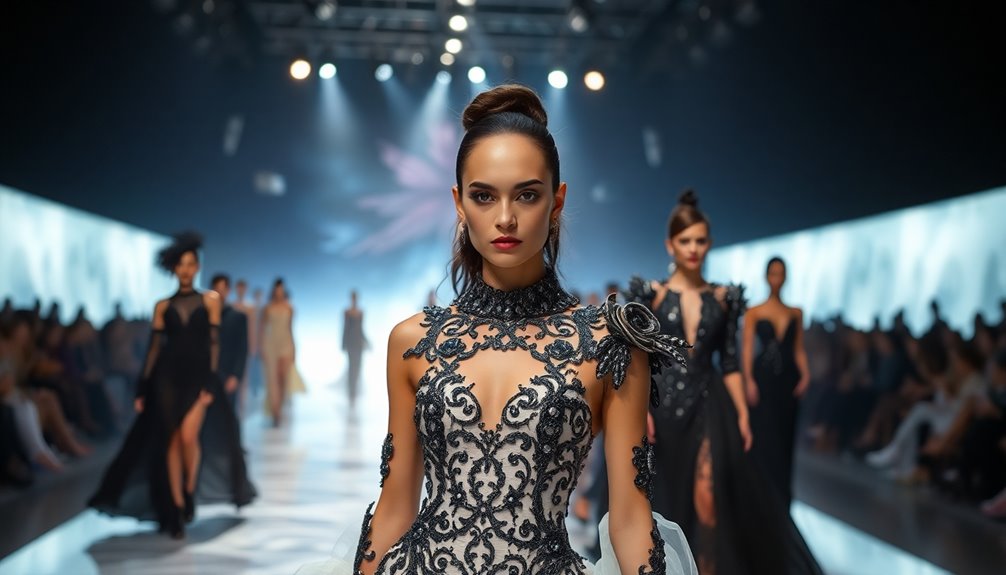
Following the impactful legacy established by Alexander McQueen, the brand entered a new era under the guidance of Sarah Burton, who took the reins as Creative Director after his passing in 2010.
You'll find that she maintained McQueen's core design tenets while infusing her unique perspective, successfully expanding the brand's repertoire to embrace a broader spectrum of femininity and strength. Notably, her design of Catherine Middleton's wedding dress cemented McQueen's reputation for exceptional craftsmanship. This dedication to intricate craftsmanship was a hallmark of McQueen's original vision and continued to resonate throughout Burton's collections.
During her 13-year tenure, Burton ensured that each collection honored McQueen's intricate craftsmanship and rebellious spirit, all while keeping the brand at the pinnacle of high fashion.
Under CEO Emmanuel Gintzburger, the brand thrived commercially as Burton balanced traditional and innovative elements in her designs.
In October 2023, Seán McGirr was appointed as her successor, bringing experience from prestigious labels like JW Anderson and Burberry.
His debut collection, set to premiere in Paris for Autumn/Winter 2024, aims to blend McQueen's foundational ethos with his visionary outlook, targeting new generations of fashion consumers.
This collection promises to be a landmark occasion, unveiling McGirr's blueprint for the brand's evolution.
Frequently Asked Questions
What Was Alexander Mcqueen's First Job in Fashion?
Alexander McQueen's first job in fashion was as an apprentice at Anderson & Sheppard, a prestigious tailoring house on Savile Row.
You'd see him honing his skills in coat-making, learning traditional techniques that would shape his future designs.
This early experience laid the groundwork for his creative journey, allowing you to appreciate how foundational these skills were when he later launched his own label and made waves in the fashion industry.
How Did Mcqueen's Background Influence His Design Style?
McQueen's background profoundly shaped your design style. Starting as a Savile Row apprentice, you mastered traditional tailoring, which instilled precision in your work.
Your experiences in theatrical costume design fueled your love for drama and storytelling.
Exposure to global influences and historical archives inspired you to merge cultures and eras, resulting in unique pieces.
This blend of technique and creativity allowed you to challenge norms, pushing fashion boundaries while expressing deeper themes.
What Was the Significance of the "Jack the Ripper" Collection?
The "Jack the Ripper Stalks His Victims" collection is significant because it boldly explores themes of sex, death, and commerce in fashion.
You see how McQueen uses Victorian motifs and dark narratives to challenge societal norms, pushing the boundaries of what fashion can represent.
The tight tailoring and provocative aesthetics invite you to confront uncomfortable truths, making the collection a cornerstone of his legacy and an influential moment in the fashion world.
What Themes Are Prevalent in Mcqueen's Later Collections?
In McQueen's later collections, you'll notice prevalent themes of death, transformation, and emotional intensity. He often explores contrasts of beauty and brutality, using symbolic colors and motifs like butterflies to signify renewal.
His designs push boundaries, challenging societal norms while incorporating historical and cultural influences. You'll find intricate detailing and narrative storytelling through fabric, creating immersive experiences that provoke thought and evoke deep emotional responses from audiences and critics alike.
How Did Mcqueen's Death Impact the Fashion Industry?
McQueen's death sent shockwaves through the fashion industry, leaving many to grapple with the loss of a visionary.
You'd notice immediate tributes from celebrities and insiders, emphasizing his profound influence.
The unexpected surge in sales highlighted how his designs became coveted collectors' items.
Despite the tragedy, the brand continued, showcasing collections that honored his legacy.
This moment marked a transformation, as McQueen's innovative spirit inspired future designers and reshaped fashion's cultural landscape.
Conclusion
In exploring Alexander McQueen's journey from savage to sophisticated, you see how his groundbreaking designs transformed the fashion world. His early inspirations and bold creativity paved the way for iconic pieces and influential collaborations that continue to resonate today. Even after his passing, his legacy endures, evolving under new leadership while maintaining the essence of his vision. McQueen's story reminds you of the power of fashion to challenge norms and inspire future generations.
